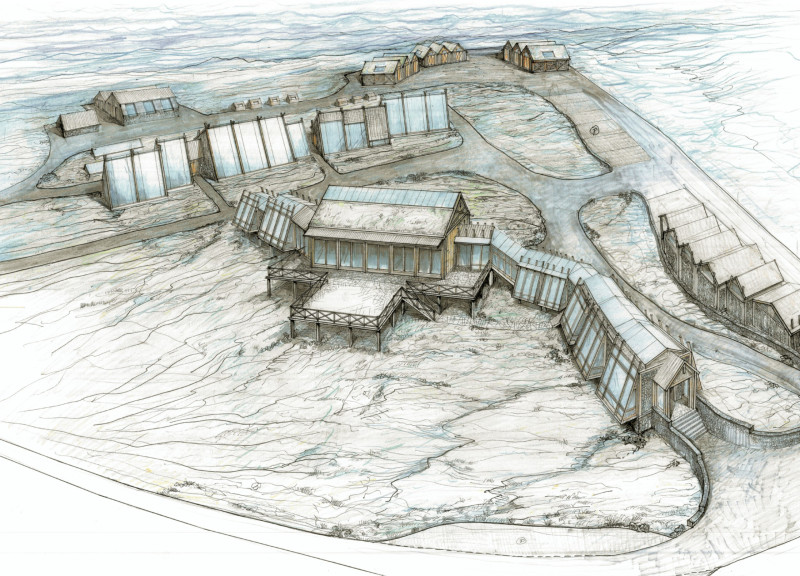5 key facts about this project
The primary function of the Lake Myvatn Community House is to offer various spaces that accommodate a range of activities, from public events to educational endeavors. The design encompasses several key facilities, including a visitor center, a multipurpose hall, a greenhouse, communal areas, and zones for equipment sharing. Each architectural element is carefully organized to facilitate movement and interaction, ensuring that the space is accessible and welcoming to all users. The prevailing concept revolves around the idea of interconnectedness—with both nature and the community itself—encouraging occupants to engage with their environment in meaningful ways.
At the core of the project’s design is a commitment to sustainability. The architects have chosen materials that minimize environmental impact while enhancing the aesthetic qualities of the building. The predominant use of wood as a structural material reflects a desire for ecological sensitivity, offering warmth and a sense of familiarity amidst the natural setting. Large expanses of glass are strategically incorporated into the design to maximize natural light and improve thermal efficiency. This approach fosters a smooth transition between indoor and outdoor spaces, allowing the architecture to visually blend with the breathtaking landscapes of Lake Myvatn.
One of the notable features of the Community House is its attention to versatility. The multipurpose hall is designed to support a variety of uses, from community gatherings to cultural events. This flexibility is essential in a rural setting, where community needs can vary greatly. The architects have also enhanced user experience by incorporating functionalities that facilitate social gatherings, emphasizing the importance of community bonding and participation.
In addition to its communal spaces, the project showcases an innovative greenhouse, which serves both educational and agricultural purposes. This aspect not only promotes local agricultural practices but also emphasizes the importance of sustainability through hands-on engagement with food production. The tools and material sharing areas reflect a commitment to the circular economy, promoting resource sharing and encouraging community members to collaborate on projects that enhance local resilience and sustainability.
Unique design approaches are evident throughout the project, particularly in how the architecture responds to the environmental context. The varied rooflines, designed with specific pitches, not only contribute to the aesthetic appeal but also facilitate effective water drainage and ventilation. These elements are crucial for adapting to the unique climatic conditions characteristic of the Lake Myvatn area. The landscape design surrounding the Community House emphasizes the use of native vegetation, which supports local biodiversity while seamlessly integrating the built environment with the natural ecosystem.
Overall, the Lake Myvatn Community House stands out as a thoughtful architectural endeavor that resonates with its environment and serves the needs of the community. It embodies a forward-thinking approach to design that prioritizes sustainability, community engagement, and adaptive use of space. Those interested in exploring the project's architectural narrative, including detailed architectural plans, sections, and innovative designs, are encouraged to review the comprehensive presentation of this endeavor to appreciate its full scope and vision. Learning about the architectural ideas and methodologies applied in this project will deepen the understanding of its potential impact on the community and its ecological surroundings.


























